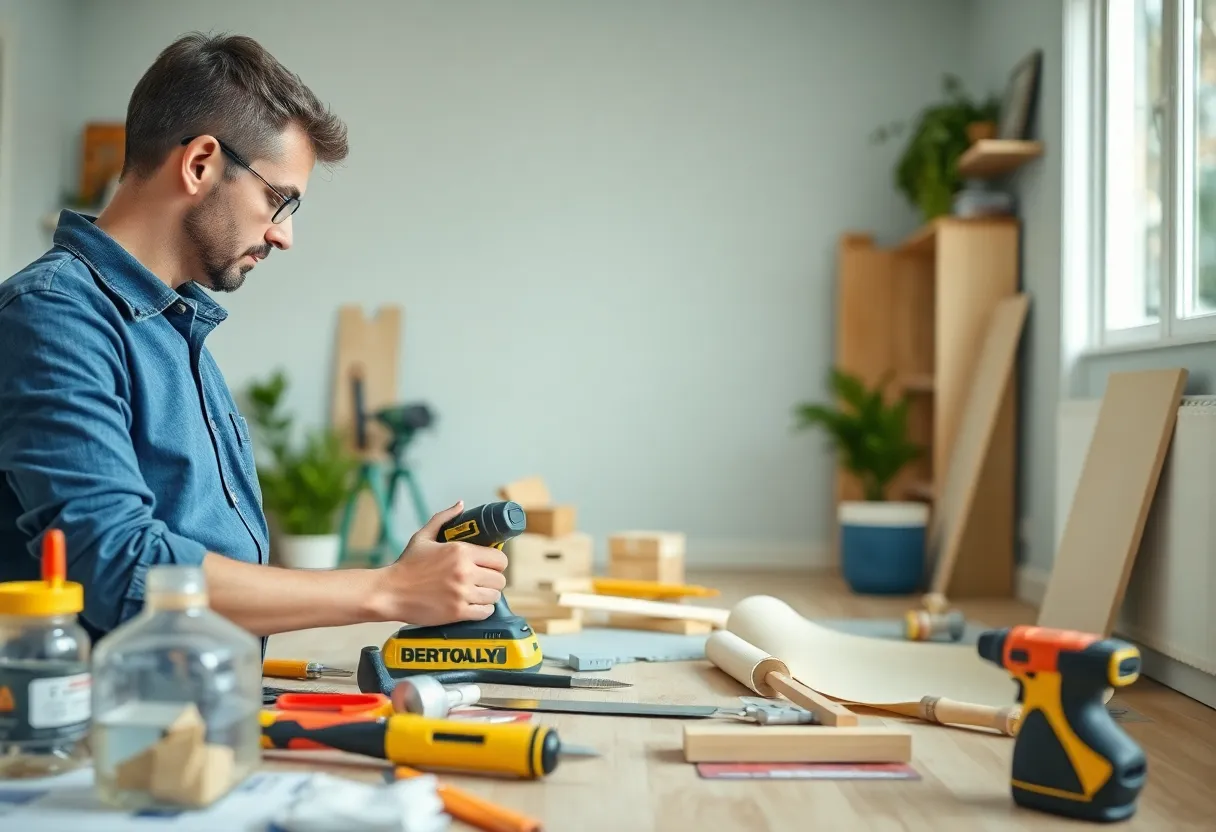What Are the Most Effective Strategies for DIY Home Improvement Projects?
Introduction
Embarking on DIY home improvement projects can be rewarding, cost-effective, and empowering. Yet, success hinges on employing strategies rooted in planning, safety, and craftsmanship. This guide explores the most effective tactics to ensure your DIY endeavors elevate your living space without unintended setbacks.
1. Comprehensive Planning and Research
Establish Clear Goals and Priorities
Begin with precise objectives. Define specific outcomes—whether renovating a kitchen, installing new lighting, or repainting a room. Prioritizing tasks helps allocate time and resources efficiently. Clear goals prevent scope creep, which can lead to frustration and budget overruns.
Conduct Thorough Research
Investigate techniques, materials, and tools relevant to your project. Reliable sources include instructional videos, reputable DIY websites, and product manuals. Understanding the scope and complexity of each task reduces mistakes and ensures proper execution.
Assess Your Skill Level and Scope
Honest evaluation of your abilities is essential. Certain projects—such as electrical work or structural modifications—may require licensed professionals. Match the project’s scope to your expertise to maintain safety and quality standards.
2. Budgeting and Material Management
Accurate Cost Estimation
Calculate the total expense, incorporating materials, tools, permits, and possible contingencies. Avoid underestimating, as unforeseen issues often arise. Creating a contingency fund of around 10-15% of the budget mitigates unexpected costs.
Quality Over Cost
Invest in durable, high-quality materials. Cheaper options may save money upfront but can lead to frequent repairs or replacements. Balancing cost with longevity ensures better value over time.
Material Procurement and Storage
Order supplies in advance to prevent delays. Store them properly to avoid damage. Proper labeling and organized storage streamline the workflow and minimize waste.
3. Detailed Planning and Scheduling
Develop a Step-by-Step Timeline
Break the project into phases with specific deadlines. A well-structured schedule minimizes downtime and overlaps. Use Gantt charts or task lists to visualize progress and dependencies.
Permits and Regulations
Confirm whether permits are necessary. Compliance with local codes avoids legal issues and ensures safety. Incorporate permit approval time into your schedule.
Contingency Planning
Anticipate potential setbacks such as supply delays, weather interruptions, or unforeseen complexities. Flexibility in planning prevents project stagnation.
4. Safety as the Cornerstone
Use Proper Personal Protective Equipment (PPE)
Wear safety glasses, gloves, masks, and appropriate footwear. PPE reduces risk of injury during handling tools or hazardous materials.
Maintain a Safe Work Environment
Keep workspaces tidy, ensure proper lighting, and secure tools when not in use. Clear hazards like loose cords or clutter prevent accidents.
Know Emergency Procedures
Have first aid kits accessible. Know how to respond to electrical shocks, cuts, or falls. Safety training enhances confidence and response effectiveness.
5. Selection of Tools and Materials
Invest in Quality Tools
Reliable tools yield better results and last longer. Essential items include drills, saws, levels, measuring tapes, and safety gear. Avoid cheap alternatives that compromise safety and quality.
Use Appropriate Materials
Select materials suited for specific applications—moisture-resistant drywall for bathrooms or pressure-treated wood for outdoor projects. Correct materials enhance durability.
Maintain and Store Tools Properly
Regular cleaning and proper storage prolong tool life. Well-maintained tools operate more efficiently, ensuring safety and precision.
6. Precision and Technique
Measuring and Marking Accurately
Use precise measuring tools to mark cut and installation lines. Small errors amplify over stages—accurate measurements are critical to fit and finish.
Follow Manufacturer Instructions
Adherence to instructions minimizes errors. Proper techniques ensure safety and optimal performance of materials and tools.
Layering and Finishing
Apply finishes like paint or sealants in thin, even coats. Proper technique prevents drips, uneven textures, and flaws, enhancing professionalism.
7. Embracing Quality Workmanship
Attention to Detail
Focus on the finer points—alignment, symmetry, smoothness. High-quality craftsmanship can elevate the overall aesthetic and functionality of your project.
Use of Guides and Templates
Templates or jigs improve consistency, especially on repetitive tasks like cabinetry or tiling. Precision tools contribute to a polished outcome.
Patience and Rework
Prioritize correctness over speed. Taking time reduces errors and avoids costly, time-consuming rework.
8. Quality Control and Review
Regular Inspections During Work
Check progress at each stage. Spotting issues early prevents compounding errors and facilitates timely correction.
Final Review and Testing
Thoroughly inspect the completed work. Test functionality—doors open correctly, fixtures are secure, surfaces are even. Address deficiencies before project sign-off.
9. Documentation and Maintenance
Keep Records
Photograph stages, store receipts, and maintain manuals. Documentation aids future repairs and provides valuable knowledge for similar projects.
Plan for Maintenance
Establish routines for cleaning, inspections, and small repairs. Proper upkeep prolongs the lifespan of improvements and sustains aesthetic appeal.
10. Learn from Mistakes and Gain Experience
Recognize setbacks as learning tools. Analyze what went wrong and adapt strategies for future projects. Building skills improves efficiency and outcomes.
Conclusion
Effective DIY home improvement projects hinge on meticulous planning, safety, and craftsmanship. Prioritize clear goals, realistic budgeting, and knowledge of techniques. Employ appropriate tools, maintain safety protocols, and inspect progress diligently. These strategies foster successful projects that enhance your home’s value and your satisfaction. Consistency in applying these core principles will elevate your skills beyond casual repairs to professional-grade results.
Author: STAFF HERE INDIANAPOLIS WRITER
The INDIANAPOLIS STAFF WRITER represents the experienced team at HEREIndianapolis.com, your go-to source for actionable local news and information in Indianapolis, Marion County, and beyond. Specializing in "news you can use," we cover essential topics like product reviews for personal and business needs, local business directories, politics, real estate trends, neighborhood insights, and state news affecting the area—with deep expertise drawn from years of dedicated reporting and strong community input, including local press releases and business updates. We deliver top reporting on high-value events such as the Indianapolis 500, Indy Jazz Fest, and the Indiana State Fair. Our coverage extends to key organizations like the Indy Chamber and Visit Indy, plus leading businesses in motorsports and healthcare that power the local economy such as Indianapolis Motor Speedway and IU Health. As part of the broader HERE network, we provide comprehensive, credible insights into Indiana's dynamic landscape.





